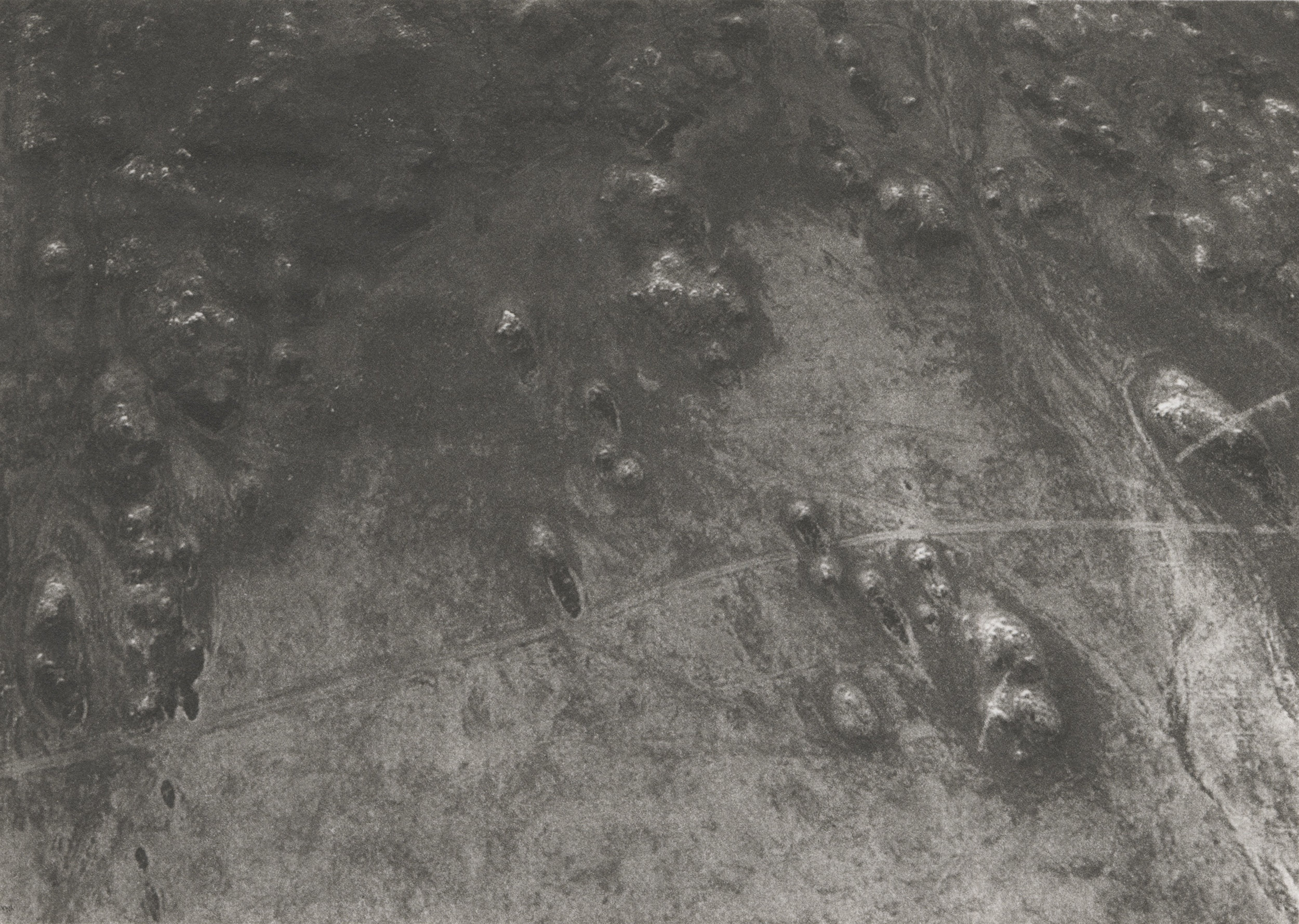The Desert and Mars
In my current work the surface of the earth is considered in relation to the planet as a celestial body, and as a corollary to surfaces of the moon and other planets such as Mars. (The moon and Mars are important because we have a photographic record of the surfaces of these bodies.) Last year, I came across a large photo book of images from Mars. As I flipped through the pages showing vast expanses of rocky ground and details of craggy rock formations and wave patterns in the soil, I had the distinct sense of having experienced this landscape first-hand. It felt almost nostalgic to me as I recognized outcroppings and rims of crater-like depressions that felt familiar. A year earlier I had been photographing very similar rock formations, wave patterns, and land forms in the remote desert area of northern Qatar. While on site during two brief trips, I was in a state of constant fascination with the landscape, intensified by the assault of the sun and heat, inescapable brightness of the earth reflecting so much light across everything scorched dry and brittle. The extreme heat and sunlight, even in winter, meant that we could only spend a few hours at a time in this location before fatigue and an escalating need to seek shelter and shade set in.
While exploring this area on foot, I would sometimes pull out my phone and look at my location on Google maps. The view on my screen showed a relatively flat area of beige textures with me, the pulsating blue dot, in the center. The view from the satellite above was remarkably similar to what I saw with my eyes as I looked down at the ground and out ahead at the monochromatic hillsides of sand and rock in front of me.
Picturing the surface of the desert was a way for me to make close observations of an unfamiliar land and establish a tactile relationship between what I make in the studio and what I am representing. The physical texture of a photographic print as it is layered on paper, gelatin, or fabric, is itself brought in direct relation to the grains of sand and soil pictured in the image. Materials such as dry pigment, silk scrim, half-tone dots and pixels, relate concretely to these grains of sand and the surface of the desert. Perceptual interferences of the landscape such as heat waves and dust, appear in the form of wave patterns from Shibori-dyed fabric and digital aberrations from the screen and the scanner. Like terrain, I consider the picture as a malleable surface containing embedded layers.















